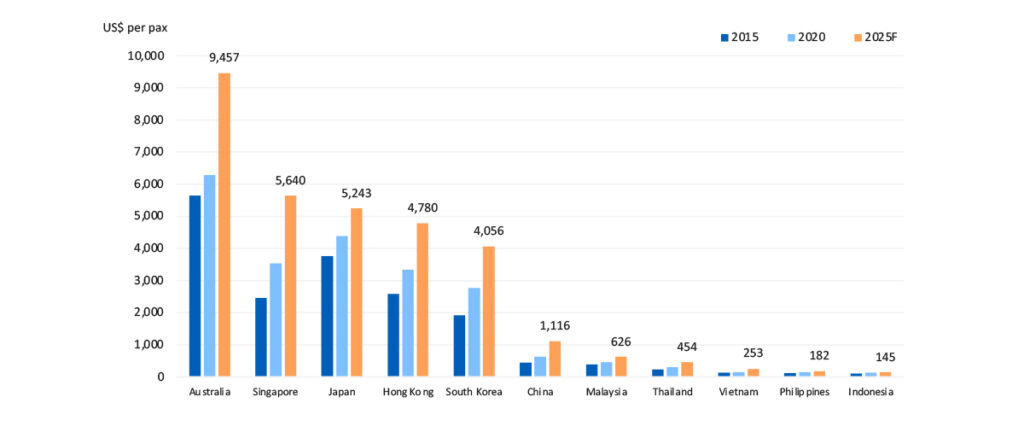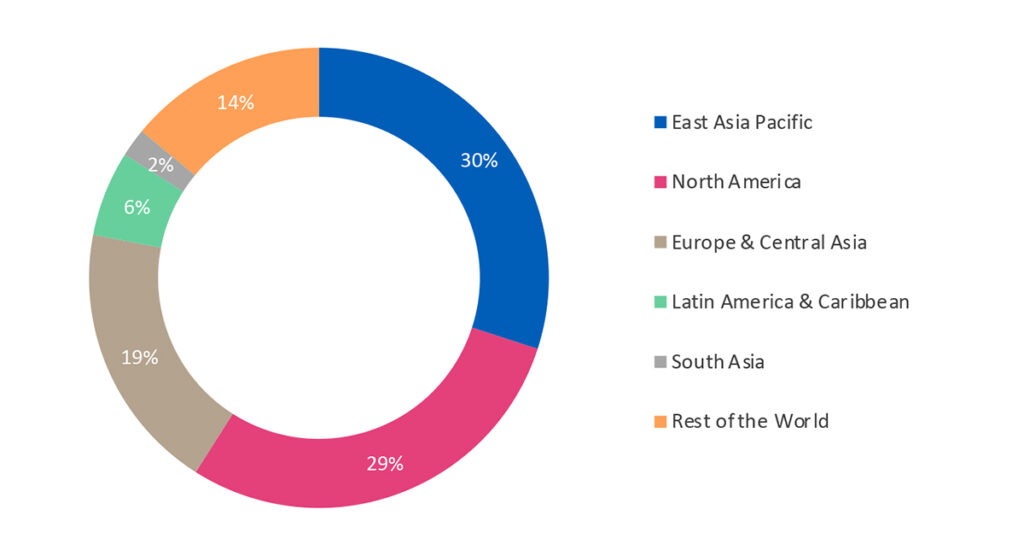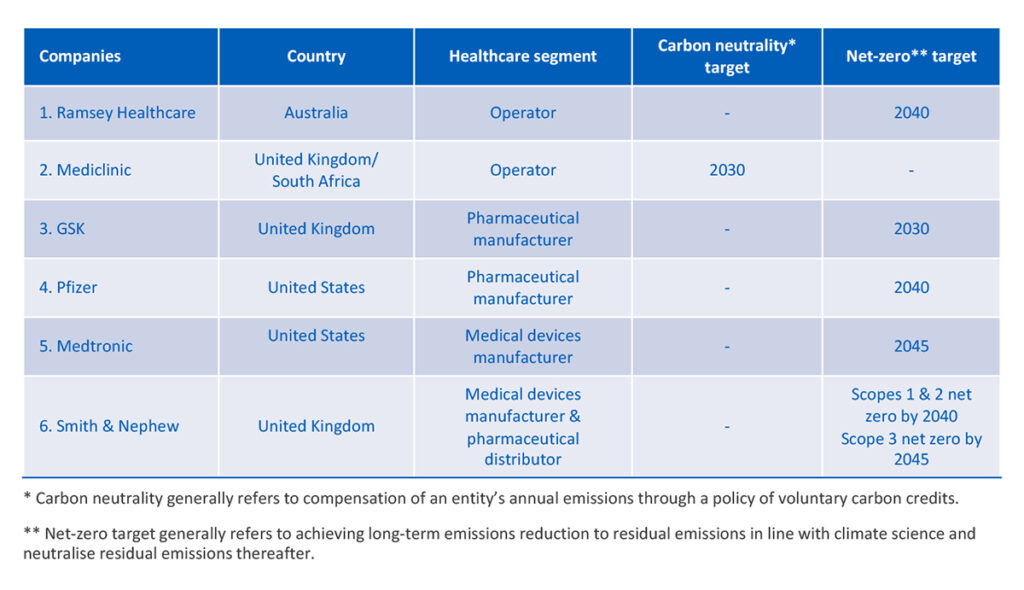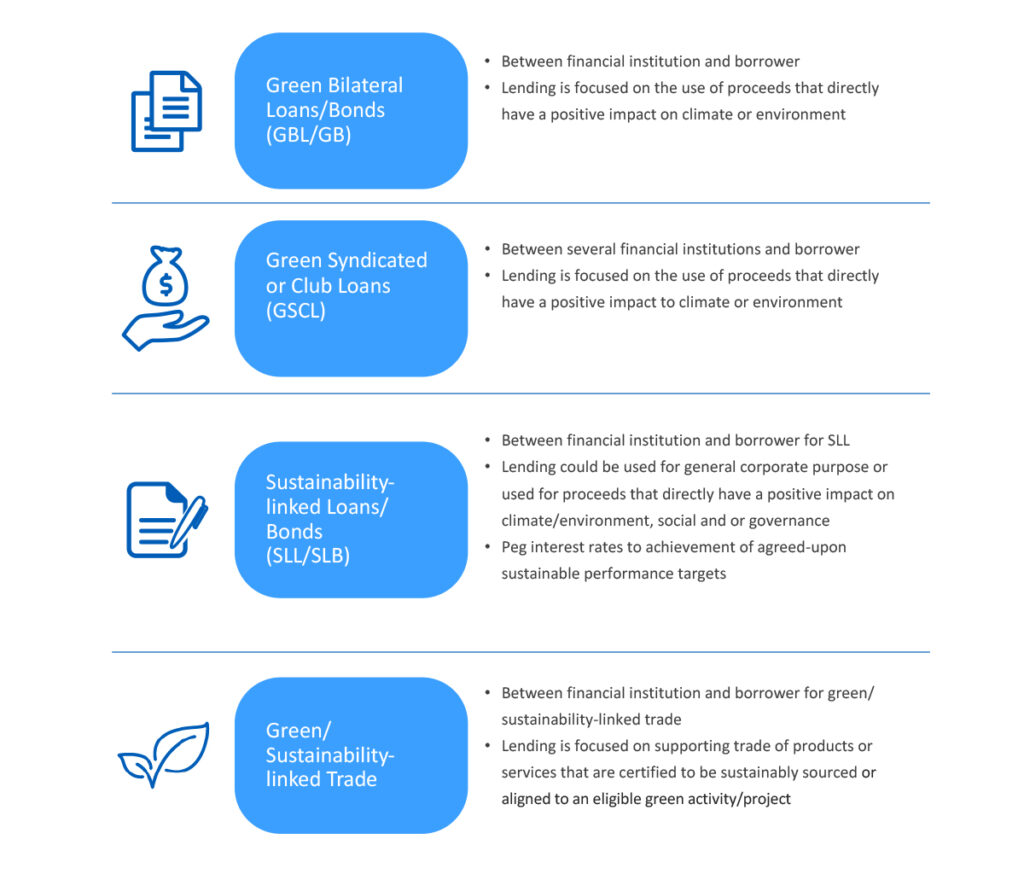Implementing Sustainability For The Healthcare Sector

TAN SHEW HENG, LEE KAI SIANG AND JILLIAN YEO
There is a paradox that healthcare products and services benefit people, yet the provision of healthcare services inevitably emits greenhouse gases (GHG). The delivery of healthcare services directly and indirectly contributes to GHG emissions through energy consumption as well as value chain activities from product manufacturing to transportation and distribution, water usage and end-of-life disposal of healthcare waste.
Rising GHG emissions could lead to extreme weather events like floods, heat waves or droughts, poor air quality and risk of climate-sensitive diseases. Therefore, it is imperative to start building a climate-resilient and environmentally sustainable healthcare sector by increasing climate awareness, building capacity and strengthening the case for investment in climate mitigation as a form of investment in health protection.
ENVIRONMENT IS READY TO ADDRESS CLIMATE CHANGE IN THE HEALTHCARE SECTOR
Countries have significantly increased health considerations in their net-zero target setting. Findings from the 2021 World Health Organization (WHO) Health And Climate Change Global Survey report show that almost all (94%) of the 142 new or updated nationally determined contributions published in 2020–2021 mentioned health, compared to 70% of 184 contributions in 2019. There are three key takeaways from the 2021 WHO report (Figure 1):
Figure 1 Three key takeaways about health and climate change

Source: 2021 World Health Organization (WHO) Health And Climate Change Global Survey report
With the COVID-19 pandemic under control and relaxation of border restrictions, a sense of normality has returned. It is timely for the healthcare sector to start addressing the urgency of climate change as part of its overall roadmap.
HEALTHCARE’S CARBON FOOTPRINT IS LINKED TO HEALTHCARE SPENDING
Rising healthcare spending
Asia Pacific faces wide disparities on per capita healthcare spending. There are countries where highly sophisticated healthcare delivery systems exist, supported by a rich ecosystem of suppliers, manufacturers and distributors, and there are countries which are less well-resourced. Nevertheless, all countries are confronted by the common challenges of an ageing population, the rise in chronic diseases, and continually investing in a system with preparedness to deal with the next infectious disease. Like the rest of the world, Asia Pacific is trending towards spending a higher portion of its gross domestic product on the healthcare sector going forward (Figure 2).
Figure 2 Key Asia-Pacific countries’ healthcare spend per capita
 Source: Fitch Solutions estimates, based on historical data from WHO and Department of Health (Hong Kong), UOB analysis
Source: Fitch Solutions estimates, based on historical data from WHO and Department of Health (Hong Kong), UOB analysis
Carbon emissions will follow rising healthcare spend unless we make active interventions
Carbon emission on a per capita basis follows the same ranking as countries’ healthcare spend. This suggests that each additional dollar spent on healthcare could lead to higher carbon emissions. Continual carbon emissions are not good for the environment and individuals’ health. The healthcare sector needs to make active interventions to build a climate-resilient and environmentally sustainable healthcare sector.
Figure 3 Carbon footprint of key Asia-Pacific countries

Source: Global Roadmap For Healthcare Decarbonisation 2021 by Healthcare without Harm, in collaboration with Arup; based on the study, the average emission from countries is between 0.28 and 0.50 ton of carbon-equivalent per capita
East Asia-Pacific countries hold the biggest share of gross emissions
According to the Healthcare’s Climate Footprint 2019 report, the healthcare sector in East Asia Pacific accounts for around 30% of the gross carbon emissions, which was the biggest contributor of carbon emissions globally (Figure 4). Unlike Europe or North America, the region typically does not lead in sustainability. However, the era of sustainability in the healthcare sector is dawning as governments made their net-zero commitments during COP 26 in 2021, and will continually refine their nationally determined contributions to meet these targets. All sectors in each country will have to play their part for governments to achieve their committed reductions.
Figure 4 Carbon emissions by region

Source: Healthcare’s Climate Footprint 2019 by Healthcare without Harm, in collaboration with Arup, UOB analysis
SOURCES OF CARBON EMISSIONS IN THE HEALTHCARE SECTOR
Healthcare sector’s carbon footprint came out as #5 largest emitter, if ranked by country
Globally the healthcare sector’s total carbon footprint was reported to be 2.0G ton of carbon-equivalent or 4.4% of global emissions, according to the tracking and estimates made by non-governmental organisation (NGO) Healthcare without Harm and Arup, in the Healthcare’s Climate Footprint 2019 study. More than half of the sector’s footprint can be attributed to energy use, from operating a healthcare facility (Scope 1 emissions1), emissions from its source of electricity (Scope 2 emissions1) and emissions arising from its supply chain (Scope 3 emissions1) (Figure 5).
Figure 5 Categories of carbon emission from a healthcare facility’s perspective

Source: Global Roadmap For Healthcare Decarbonisation 2021 by Healthcare without Harm, in collaboration with Arup, UOB analysis
After understanding the breakdown of emissions coming from the healthcare sector, there are various ways for the sector to decarbonise:
Actively reduce emissions from own operations (Scope 1 emissions);
Use electricity from clean sources (Scope 2 emissions);
Influence and work with your value chain, including suppliers and distributors, to reduce their emissions, which will in turn reduce your own emissions (Scope 3 emissions).
ENVIRONMENTAL COMMITMENTS MADE BY HEALTHCARE SECTOR
Bold commitments by industry leaders suggest that the healthcare sector could move ahead of other sectors to reach net zero
Just like many other sectors, the players working actively to reduce their carbon footprint in the healthcare sector are mainly led by multinational companies (MNCs) from Europe, United States and other western countries. Their environmental commitment announcements suggest that with determination, it is possible for the healthcare sector to reach net zero by 2050 to be aligned with the Paris Agreement. In fact, some of the sustainability leaders in the healthcare sector have made commitments to reach net zero earlier than 2050 (Figure 6).
Figure 6 Examples of environmental targets set by various players in key segments of the healthcare value chain

Source: Various company commitments
POTENTIAL AREAS OF ENVIRONMENTAL IMPROVEMENTS FOR THE HEALTHCARE SECTOR
Figure 7 shows the potential areas of environmental improvements in key segments of the healthcare value chain. While there is urgency and importance to address climate change issues within the healthcare sector, companies may face financial challenges to forward their climate change plans. But, as climate awareness grows, more financial institutions are now stepping forward with sustainable financial solutions to support companies in their green journey. Figure 8 shows the key types of sustainable financing instruments available to companies in the healthcare sector looking to finance the various parts of the healthcare value chain.
Figure 7 Areas of environmental improvements in key segments of the healthcare value chain

Figure 8 Key types of sustainable financing instruments to support companies in the healthcare sector

Even though Asia has yet to feature at the forefront of sustainability, there is a gradual trend of moving towards greater environmental awareness as various Asian governments have stepped forward at COP 26 in 2021 to make net-zero commitments. As seen in Figure 4: Carbon emissions by region, Asia Pacific is responsible for around 30% of the carbon emissions from the healthcare sector. It is timely for Asian healthcare companies to consider how they can do their part to contribute to a greener healthcare sector.
Scan the QR code for a full copy of the report, Implementing Sustainability For The Healthcare Sector, or access it online.

Tan Shew Heng is from Business Insights (Healthcare and Energy & Chemicals) – Sector Solutions Group; Lee Kai Siang and Jillian Yeo are from Centre of Excellence – Sector Solutions Group, United Overseas Bank Limited.
IMPORTANT NOTICE AND DISCLAIMER
Nothing in this article constitutes accounting, legal, regulatory, tax, financial or other advice. If in doubt, you should consult your own professional advisers about issues discussed herein. The information contained in this article, including any data, projections and underlying assumptions, are based on certain assumptions, management forecasts and analysis of known information and reflects prevailing conditions as of the date of the article, all of which are subject to change at any time without notice. Although every reasonable care has been taken to ensure the accuracy and objectivity of the information contained in this article, United Overseas Bank Limited (“UOB”) and its employees make no representation or warranty of any kind, express, implied or statutory, and shall not be responsible or liable for its completeness or accuracy. As such, UOB and its employees accept no liability for any error, inaccuracy, omission or any consequence or any loss/damage howsoever suffered by any person, arising from any reliance by any person on the views expressed or information in this article. United Overseas Bank Limited Co. Reg. No. 193500026Z
1 According to Greenhouse Gas Protocol Corporate Standard, GHG emissions are classified into the following three “scopes”:
Scope 1 emissions are direct emissions that occur from sources that are owned or controlled by the company.
Scope 2 emissions are indirect emissions associated with the purchase of electricity, steam, heat or cooling.
Scope 3 emissions are all indirect emissions as a consequence of the company’s activities, but occurring from sources not owned or controlled by the company.
This article was first published by ISCA at the following URL: https://journal.isca.org.sg/2023/08/03/implementing-sustainability-for-the-healthcare-sector/pugpig_index.html












